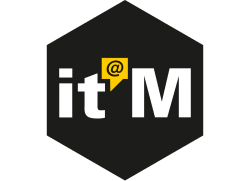Design Philosophy
- vuetify:
Vuetify is centered around the Material Design specification, offering a comprehensive set of components that adhere to Google's design principles. It aims to provide a consistent and visually appealing user experience across different devices and platforms.
- element-plus:
Element Plus focuses on providing a polished and elegant design, with a wide range of components that cater to desktop applications. Its design philosophy is centered around usability and aesthetic appeal, making it suitable for applications that require a professional touch.
- ant-design-vue:
Ant Design Vue follows a design philosophy that emphasizes a clean and professional look, suitable for enterprise applications. It provides a comprehensive set of components that adhere to the Ant Design guidelines, ensuring consistency and usability across the application.
- bootstrap-vue:
Bootstrap Vue is built on the popular Bootstrap framework, which emphasizes responsive design and mobile-first development. It provides a familiar set of components that are easy to use and integrate, making it ideal for developers who appreciate Bootstrap's design principles.
- naive-ui:
Naive UI adopts a minimalist design philosophy, focusing on simplicity and ease of use. It provides a clean and modern aesthetic, making it suitable for applications that prioritize user experience and performance without unnecessary complexity.
Component Variety
- vuetify:
Vuetify boasts an extensive library of components that cater to a wide range of needs, from basic UI elements to complex data visualization tools. Its components are designed to work seamlessly together, providing a cohesive development experience.
- element-plus:
Element Plus features a comprehensive array of components tailored for desktop applications, including advanced data tables, form controls, and layout options. Its component library is well-suited for applications that require a high level of interactivity and data handling.
- ant-design-vue:
Ant Design Vue offers a rich set of components that cover a wide range of use cases, including data display, navigation, and feedback. Its components are designed to be highly customizable and are suitable for complex applications that require advanced functionality.
- bootstrap-vue:
Bootstrap Vue provides a solid selection of components that align with Bootstrap's offerings, including forms, modals, and navigation elements. While it may not have as extensive a component library as others, it covers the essentials for most applications.
- naive-ui:
Naive UI offers a growing set of components that are designed to be lightweight and flexible. While it may not have as many components as some other libraries, it focuses on providing essential components that are easy to use and integrate into modern applications.
Customization
- vuetify:
Vuetify offers a powerful customization system that allows developers to create custom themes and styles using SASS variables. Its extensive documentation provides guidance on how to effectively customize components to meet specific design needs.
- element-plus:
Element Plus provides a robust theming system that allows for deep customization of component styles. Developers can easily override default styles and create custom themes to align with their application's design requirements.
- ant-design-vue:
Ant Design Vue allows for extensive customization through its theming capabilities, enabling developers to tailor the look and feel of components to match their application's branding. It supports CSS variables for easy theme adjustments.
- bootstrap-vue:
Bootstrap Vue inherits Bootstrap's customization options, allowing developers to modify styles using Sass variables and utility classes. This makes it straightforward to adapt the design to fit specific project requirements.
- naive-ui:
Naive UI emphasizes simplicity and provides straightforward customization options, allowing developers to easily modify component styles. It supports CSS variables for theming, making it easy to achieve a unique look without extensive configuration.
Community and Support
- vuetify:
Vuetify has a large and active community, with extensive documentation and a variety of resources available. Its popularity ensures that developers can find support and solutions easily, making it a reliable choice for long-term projects.
- element-plus:
Element Plus has a growing community with active contributions and support. The documentation is well-structured, providing clear examples and guidelines for developers to follow.
- ant-design-vue:
Ant Design Vue has a strong community and is backed by Ant Financial, ensuring regular updates and a wealth of resources. The documentation is comprehensive, making it easier for developers to find support and examples.
- bootstrap-vue:
Bootstrap Vue benefits from the large Bootstrap community, providing ample resources, tutorials, and third-party plugins. Its popularity ensures that developers can easily find help and solutions to common issues.
- naive-ui:
Naive UI is relatively new but has been gaining traction quickly. Its community is enthusiastic, and while resources may be limited compared to more established libraries, the documentation is clear and helpful for getting started.
Learning Curve
- vuetify:
Vuetify has a steeper learning curve due to its extensive features and adherence to Material Design principles. However, its comprehensive documentation and community support help mitigate this challenge, making it easier for developers to learn.
- element-plus:
Element Plus has a moderate learning curve, particularly for those new to Vue.js. However, its well-structured documentation helps developers quickly understand how to use its components effectively.
- ant-design-vue:
Ant Design Vue has a moderate learning curve, especially for developers familiar with Vue.js. Its comprehensive component library may require some time to explore, but the documentation is thorough, easing the learning process.
- bootstrap-vue:
Bootstrap Vue is easy to learn for developers already familiar with Bootstrap. Its straightforward API and component usage make it accessible for beginners, allowing for rapid development without a steep learning curve.
- naive-ui:
Naive UI is designed to be simple and intuitive, making it easy for developers to pick up and start using. Its minimalistic approach reduces complexity, allowing for a smoother learning experience.















